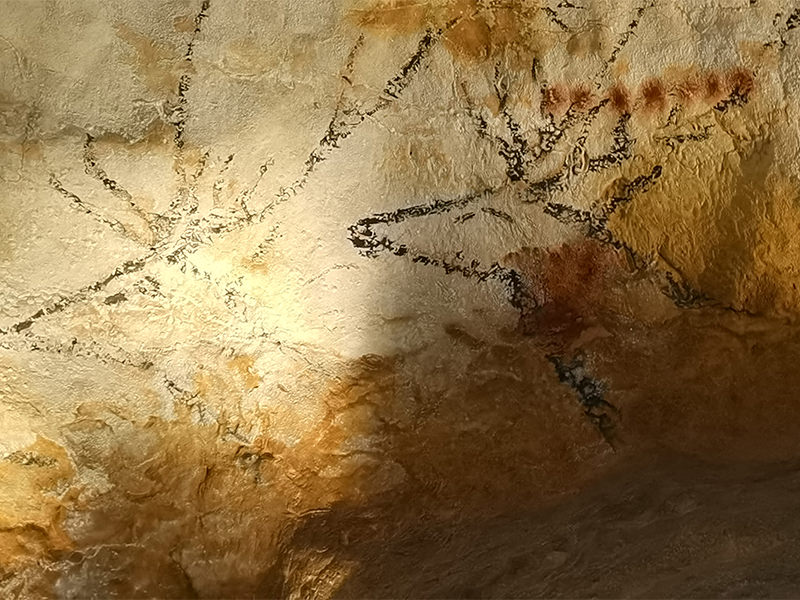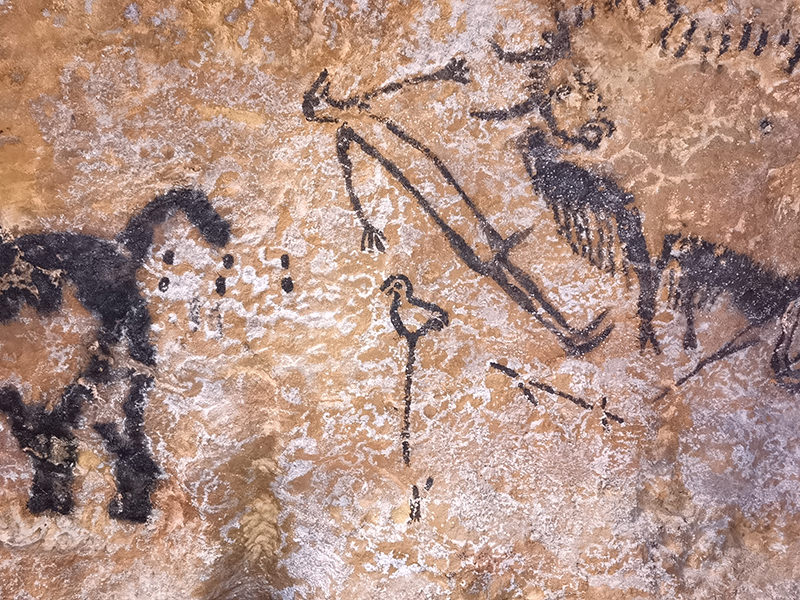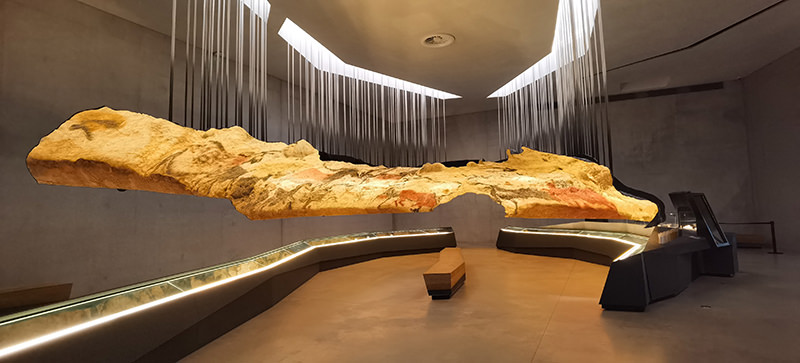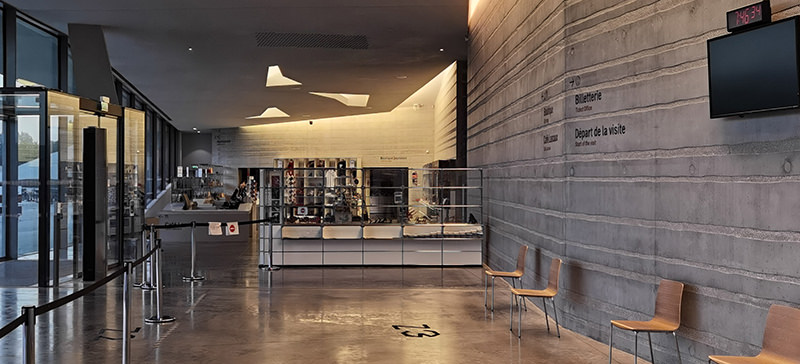
Lascaux IV
ART
Produced by :  © 2020
© 2020


Produced by :  © 2020
© 2020
Well 10 minutes from our campground, on the outskirts of Montignac, lies the cave of Lascaux. It is famous for its paleolithic cave paintings. They are estimated to be up to 20,000 years old.

The Vézère Valley in the Dordogne region, declared a World Heritage Site by UNESCO, is full of prehistoric sites with around 25 caves, including the famous Lascaux Cave in Montignac.
9,000 m² of buildings blend into the landscape, stretched like a facade open to the side, almost invisible from above through the green roof. This is the Lascaux International Center or better «Lascaux IV», because the cave is almost completely reconstructed.
Opened to the public in 1983, Lascaux IV was the first facsimile of a cave in the world, containing the two most famous galleries: the Salle des Taureaux and the Diverticule Axial, reproduced identically with impressive precision. A few hundred meters from the original cave is «Lascaux IV», ready for an extensive visit as close as possible to the original cave.

In September 1940, the young Marcel Ravidat discovered a cave in the hill of Lascaux. Four days later, he climbed into the cave with his friends Jacques Marsal, Georges Agniel and Simon Coencas. The four teenagers discovered numerous cave paintings. Maurice Thaon made the first drawings and sketches of the walls under the guidance of Abbé Breuil - a professor at the Collège de France and a great specialist in cave art.
The Lascaux Cave is opened to the public in 1948. From the first years it has caused unprecedented enthusiasm among tourists. Unfortunately, this was not without consequences: The carbon dioxide released quickly affected the site's fragile rock walls. In order to protect and preserve the artworks, André Malraux, then Minister of Culture, set up a scientific commission for the Lascaux cave and decided on April 18, 1963, to close it to visitors. Then, 20 years later, the works of art of the prehistoric painters could be admired again. Lascaux IV was opened. Together with our guide, we embarked on a journey through time as we marveled at this masterpiece of prehistory, reflecting on the evolution of man and his tools.

